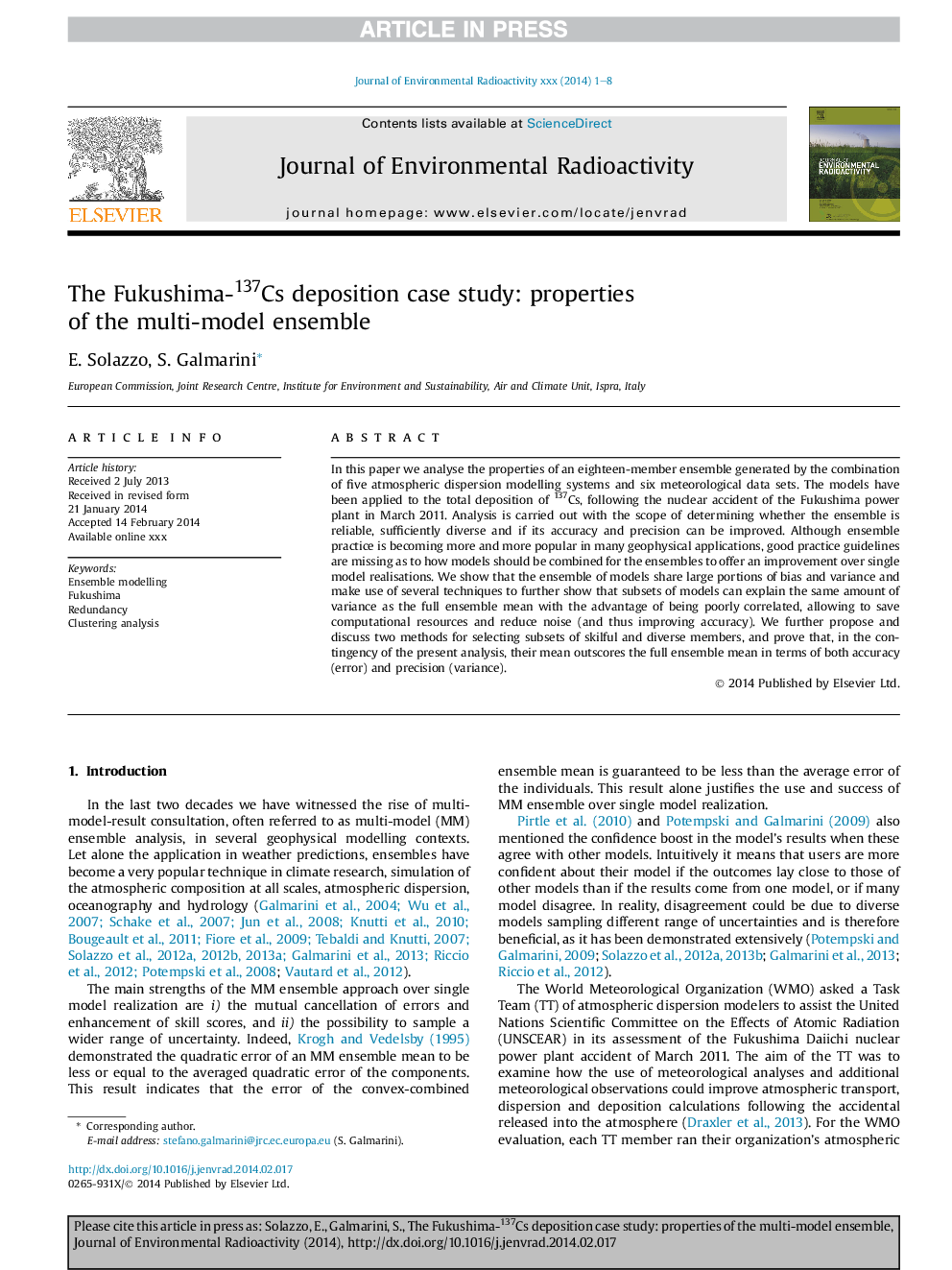| Article ID | Journal | Published Year | Pages | File Type |
|---|---|---|---|---|
| 8082612 | Journal of Environmental Radioactivity | 2015 | 8 Pages |
Abstract
In this paper we analyse the properties of an eighteen-member ensemble generated by the combination of five atmospheric dispersion modelling systems and six meteorological data sets. The models have been applied to the total deposition of 137Cs, following the nuclear accident of the Fukushima power plant in March 2011. Analysis is carried out with the scope of determining whether the ensemble is reliable, sufficiently diverse and if its accuracy and precision can be improved. Although ensemble practice is becoming more and more popular in many geophysical applications, good practice guidelines are missing as to how models should be combined for the ensembles to offer an improvement over single model realisations. We show that the ensemble of models share large portions of bias and variance and make use of several techniques to further show that subsets of models can explain the same amount of variance as the full ensemble mean with the advantage of being poorly correlated, allowing to save computational resources and reduce noise (and thus improving accuracy). We further propose and discuss two methods for selecting subsets of skilful and diverse members, and prove that, in the contingency of the present analysis, their mean outscores the full ensemble mean in terms of both accuracy (error) and precision (variance).
Related Topics
Physical Sciences and Engineering
Energy
Nuclear Energy and Engineering
Authors
E. Solazzo, S. Galmarini,
